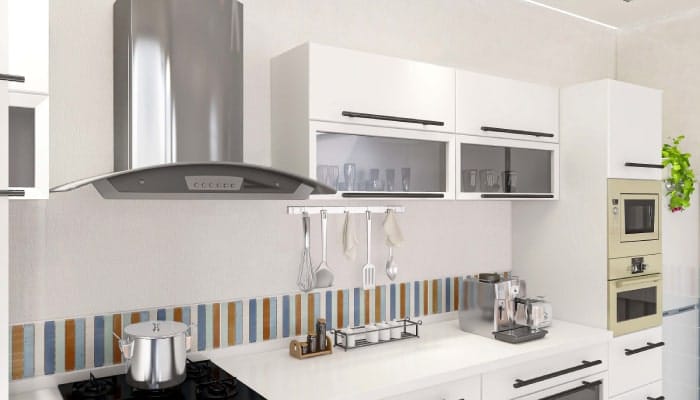When it comes to modern building practices, choosing the right materials can make all the difference in long-term performance, sustainability, and design flexibility. One material that’s gaining serious momentum is fiber-reinforced polymer (FRP). From walls and roofs to skylights and hygienic interiors, it offers a lightweight and durable alternative to conventional options like concrete, steel, and wood. This article explores how FRP revolutionizes building approaches, highlighting its key applications and advantages.
FRP: The Game Changer in Modern Building
This composite represents a shift in how we think about construction. Made from a polymer matrix reinforced with glass fibers, FRP provides impressive strength and long-term performance. It avoids the weight, corrosion, and maintenance issues often associated with more traditional building materials.
- Durability and Resistance: FRP resists corrosion, moisture, and wear. Unlike metal that rusts or concrete that cracks, FRP maintains its structure even in extreme environments.
- Lightweight Yet Strong: Its strength-to-weight ratio makes it easier to install, reducing project timelines and costs.
- Design Versatility: FRP can be molded into nearly any shape or finish, supporting modern architectural creativity.
Learn more about FRP in residential construction or browse our FRP panel solutions.
The Role of FRP in Construction
From towering skyscrapers to serene pedestrian bridges, FRP’s applications in construction are both diverse and impressive. Its ability to strengthen structures while maintaining a lighter footprint is particularly valuable in areas where traditional materials might have issues. Here are some of the most common examples of what FRP is in construction:
Exterior Walls
FRP’s unique properties make it a great choice for exterior wall applications, where you need durability and resistance against all of the environmental factors. Its high strength-to-weight ratio allows for large, lightweight panels that can be easily installed, reducing your overall construction time. Additionally, FRP is resistant to corrosion and moisture, allowing the exterior walls of your structure to withstand any harsh weather conditions.
- Weather Resilience: FRP doesn’t get damaged by large hail, wind, rain, or the sun, making it ideal for external cladding.
- Aesthetic Flexibility: Available in various finishes, FRP can emulate more traditional materials like wood or stone, providing architects with creative freedom while maintaining material performance.
Interior Walls
Inside your buildings, FRP finds its place. It is really popular in high-traffic areas since it doesn’t get damaged easily from impacts and scratches. Lightweight and easy to install, FRP panels can be used as decorative elements or functional surfaces in commercial and residential spaces.
- Hygienic Surfaces: The non-porous feature of FRP panels makes them perfect for buildings that require sterile conditions, such as hospitals or food preparation areas.
- Design Versatility: With a range of textures and colors, FRP can be seamlessly integrated into interior designs, improving spaces without the hassle of maintenance.
Roofing: Acrylic Roof Panels
Innovative roofing solutions like Stabilit America’s acrylic roof panels demonstrate FRP’s adaptability and performance under extreme conditions. These panels provide 100% natural illumination, exceptional impact resistance, and double-sided gel coat protection for enhanced durability.
- Energy Efficiency: The translucent nature of acrylic panels allows for natural light diffusion, reducing the need for artificial lighting and contributing to energy savings.
- Longevity and Protection: With a warranty against yellowing and fiber bloom, these panels ensure a long service life without maintenance headaches, even under harsh weather conditions.
Bathroom Shower Stalls
The mold and moisture resistance of Stabilit America’s FRP fits well with bathroom installations. The seamless surfaces prevent water infiltration and mold growth, ensuring a clean and safe environment.
- Easy Maintenance: The smooth surface of FRP panels makes them easy to clean and disinfect.
- Custom Fit: You can custom-fit FRP to any space, allowing for flexible design options in bathroom layouts.
Skylights
Utilizing FRP in skylight applications harnesses its light-transmitting capabilities while ensuring durability and resistance to environmental impacts. Skylights made from FRP help in energy conservation by maximizing natural light, which reduces the need for heating and lighting.
- UV Protection: FRP’s inherent UV resistance protects interiors from harmful rays while allowing beneficial light to enter.
- Impact Resistance: The robust nature of FRP ensures that skylights can withstand the elements without compromising performance or aesthetics.
Covered Walkways
For covered walkways, FRP provides a lightweight, durable solution that stands up to weather and constant use. Its easy installation and minimal maintenance make it ideal for connecting spaces in commercial and educational facilities. FRP can be crafted to blend with existing architectural elements, maintaining design continuity.
Comparing FRP to Traditional Materials
When you take the time to measure FRP in construction up against some of the traditional construction materials, you can really start to see the benefits of your choice:
- Against Steel: Yes, we all know that steel is known for its strength, but you need to keep in mind that it is susceptible to corrosion and requires a significant amount of maintenance, especially in corrosive environments. On the other hand, FRP offers comparable strength without the propensity to rust.
- Against Wood: Wood may look really nice, but it doesn’t hold up very well under moisture or insect threats. FRP eliminates these concerns, providing a durable, pest-free alternative that can actually mimic wood’s visual appeal without its vulnerabilities.
- Against Concrete: Although concrete is a staple in construction, its weight and rigidity can limit its use in designs requiring flexibility. FRP offers a lighter, more adaptable solution that can withstand similar loads without the brittleness associated with concrete.
Why Repair Using FRP?
Repairing structures with FRP not only restores their integrity but often improves their overall performance. Whether it’s fixing aged infrastructure or upgrading buildings for better resilience, FRP’s easy application and durability make it a good choice for repairs. This helps your structures return to their original state while also gaining improved functionality and longevity.
Embrace the Future with FRP
As the construction industry continues to seek out materials that offer both performance and sustainability, FRP is poised to play a big role. At Stabilit America, we’re at the forefront of this movement, providing cutting-edge FRP solutions that meet the demands of modern construction. Contact us today to learn how our FRP panel products can elevate your next project.
Build Smarter, Build with Confidence
As the industry continues to demand better performance, safety, and efficiency, FRP stands out as a reliable and forward-thinking material. When you’re ready to explore long-lasting construction solutions, Stabilit America is here to guide the way.

FAQs
What is FRP in construction?
It’s a composite material made of fiberglass and polymer resin, known for its strength, lightweight nature, and resistance to corrosion and wear.
What are its main benefits?
Durability, easy installation, low maintenance, and adaptability to harsh environments — from commercial kitchens to exterior cladding.
Where is it most commonly used?
In wall systems, roofing, skylights, bathrooms, covered walkways, and food-safe facilities.
Can it handle high heat?
Standard panels have some thermal limitations, but fire-rated and high-temperature-resistant options are available.
Stabilit America Inc. is a leading North American manufacturer of fiberglass reinforced panels (FRP) and polycarbonate sheets, with over 65 years of experience. The company offers the widest range of acrylic, polyester, and polycarbonate laminates, backed by international certifications (USDA, Greenguard, FM, ISO 9001, among others), serving industries such as industrial construction, transportation, and sustainable building.


